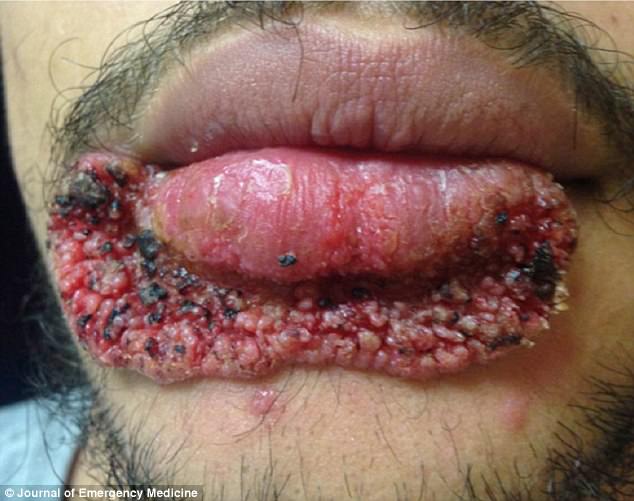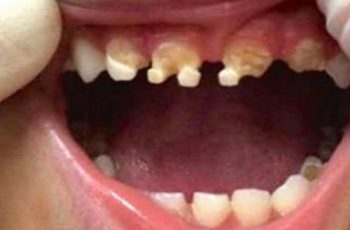A 23-year-old construction worker from Chicago caught a horrific fungal infection after strangely deciding to drain a pimple on his lower lip with his woodworking blade.
This photo will make you think twice before using strange tools to squeeze the pus out of nasty zits.
The unsightly mass had been growing for nearly seven months before the unnamed man sought help from doctors.
After undergoing treatment, the man was cured of the blood-encrusted lesion in two weeks.

A construction worker caught a horrific fungal infection after strangely deciding to drain a pimple on his lower lip with his woodworking blade
The dermatologists were stunned and wrote about the unusual case, caused by the Blastomyces conidia fungus, in the Journal of Emergency Medicine.
Typically, this type of infection is found in soil and animal habitats in areas close to the Great Lakes, the Ohio River basin and the Mississippi River.
It is so rare that only 50 cases of blastomycosis caused by traumatic inoculation, have been recorded in medical literature.
This is, however, believed to be the first noted case of infection from a woodworking blade, according to the dermatologists.
The man, who presented himself to the John H. Stroger Jr. Hospital of Cook County, Chicago, had no other symptoms. Upon questioning, the anonymous patient denied traveling anywhere in recent months or have been around any ill friends.
The medics said the patient’s condition was ‘likely initiated’ by the woodworking blade.
They added: ‘It [blastomycosis] is usually observed in laboratory or morgue workers, and less frequently in dog handlers after a bite or scratch.’
A New York-based dermatologist warned last May that popping spots could make them worse – despite the temptation to squeeze them before a date or an important interview.
Dr. Cameron Rokhsar warned that squeezing spots can also damage skin, lead to infection and permanent scarring difficult to treat.
Dr. Rokhsar explained spots are caused by three factors: overproduction of oil, irregular shedding of dead skin, and a build-up of bacteria.
The skin is covered with tiny openings called pores. The pores allow sweat and sebum – an oily substance the body produces to lubricate the skin and hair – to pass through.
When the pores become blocked with sebum, dead skin cells and bacteria, spots can form.
If you know someone who might like this, please click “Share!”

